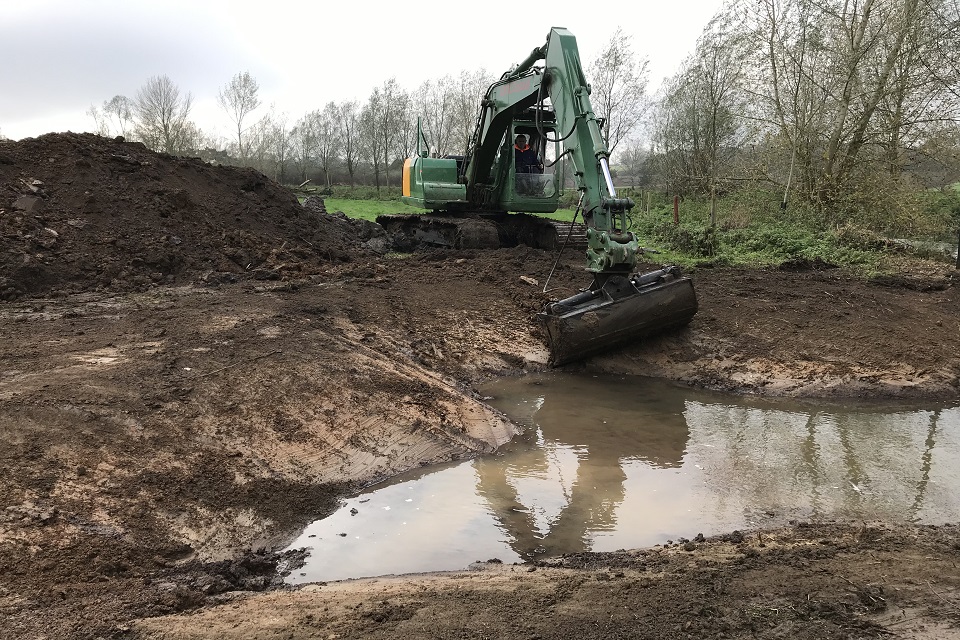The Environment Agency worked with the Dedham Vale Area of Outstanding Natural Beauty and Stour Valley Project, and a landowner, on a river and floodplain enhancement.
The project, which was funded through Defra's Water Environment Improvement Fund, will help water voles, fish and invertebrates flourish.
This stretch of the Stour has historically been modified to facilitate milling, navigation and land drainage. The project was focused on improving the condition of the stretch by enriching the habitats along the river and enhancing connectivity with the floodplain.

The backwater being created.
Parts of the river edge have been re-profiled to create areas of shallow water that will encourage the growth of marginal plant species.
Five backwaters of varying size have also been created along the bank of the river. A backwater is an aquatic habitat which connects to the main river and has two important functions depending on the flow.
In high flows, the backwater becomes a refuge for adult fish to rest in until the normal flows return.
In normal flows, the shallower water left in the backwater will warm up quicker than the main channel. This means it will act as a nursery area promoting the growth of young fish.

A marsh dyke before the project (scroll down to see the completed work).
Large woody debris has been placed in some of these features to provide a diversity of habitats attractive to invertebrates and fish.
Rob Dryden, a biodiversity specialist from the Environment Agency, said:
We've welcomed this opportunity to work with local partners to put in place these habitat enhancements to the River Stour and adjacent floodplain grazing marshes.
We look forward to seeing the increase in local biodiversity as the new habitats become established.
Councillor Nigel Chapman, chairman of the Dedham Vale Area of Outstanding Natural Beauty, said:
I am delighted to see this project completed. It will enhance the natural wetland features and the associated wildlife of the nationally designated landscape.
With the landowners, Environment Agency and the AONB team working together we can start pursuing our shared aims for wildlife recovery.

The marsh dyke completed.
The project has restored more than 400 metres of floodplain ditches, reconnecting them to the river and selectively deepening them so they remain wet at all times. This has substantially increased the area of wetland on the site, providing additional habitat for fish, aquatic invertebrates and aquatic plant species.
A small number of trees and shrubs will be planted along the river bank to provide additional habitat diversity.
This section of the River Stour supports a population of water vole. Detailed mitigation measures were put in place to minimise any impacts on this species.
Overall, the project will result in a net increase in suitable water vole habitat. It is also expected that water voles will colonise the newly created wetlands in the years ahead.






